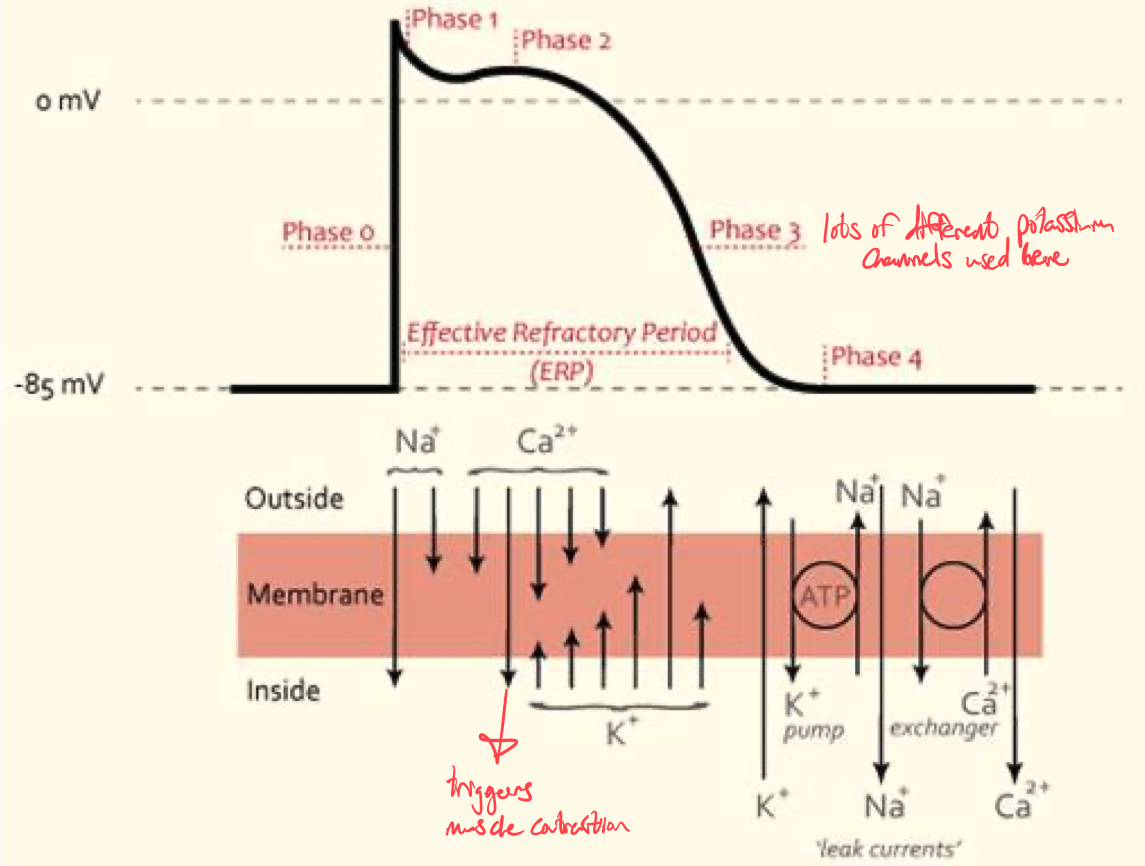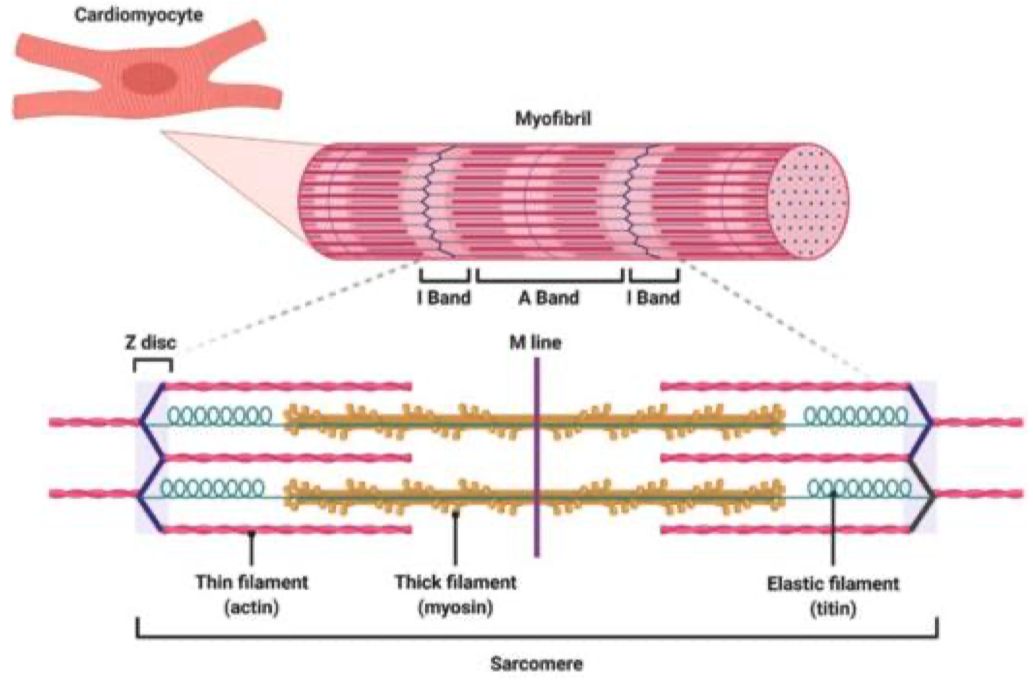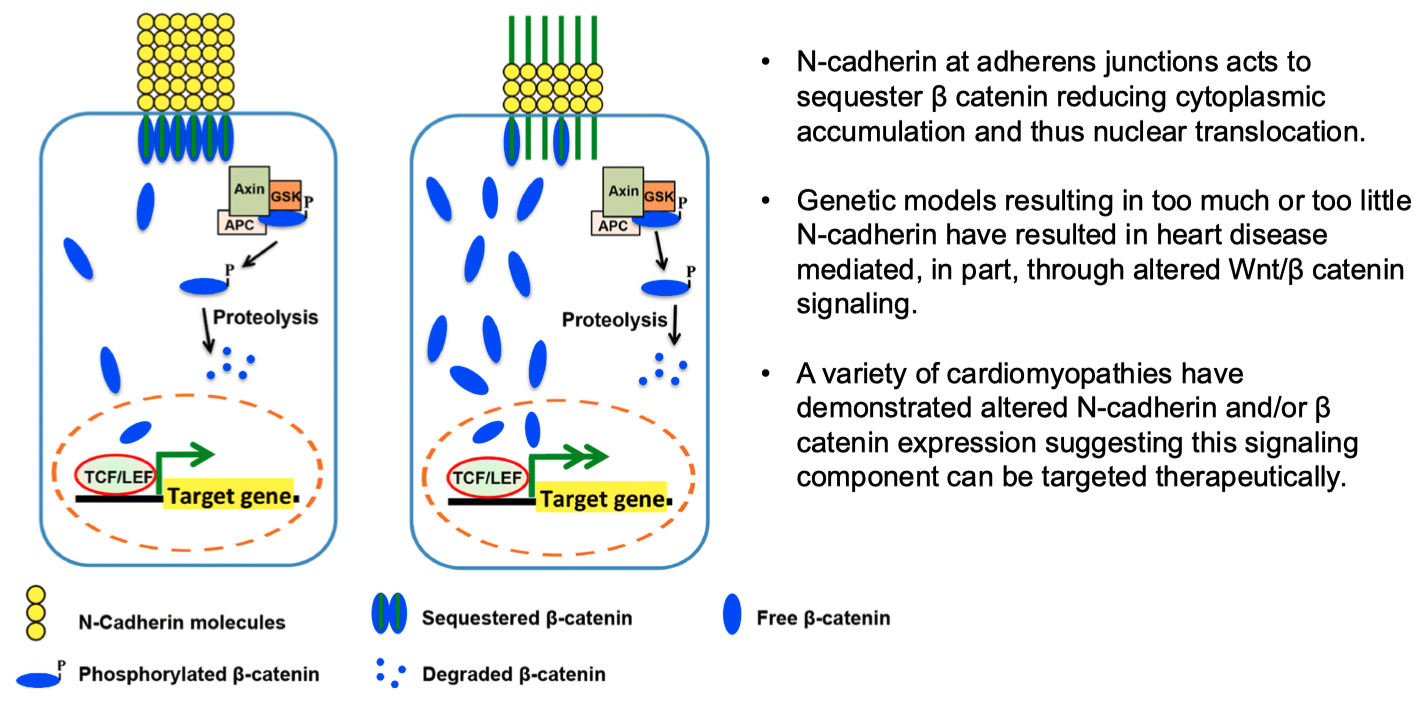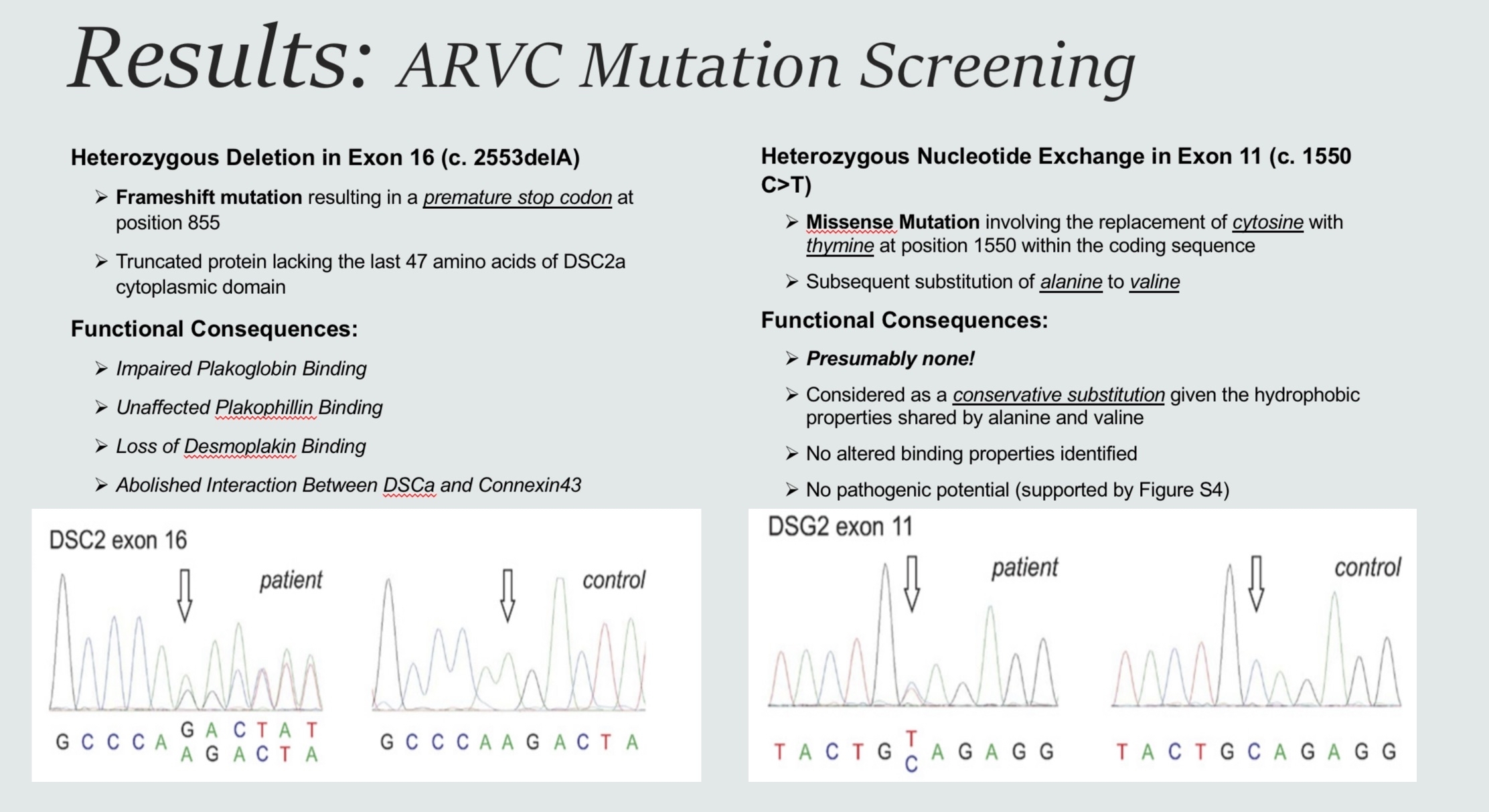For what does the heart utilize electrical signaling ?
to maintain rhythm
to drive force of contraction
How does a cardiomyocyte action potential contribute to muscle contraction ?
depolarization ➡️ voltage-gated channels ➡️ calcium-induced-calcium-release
What is the sarcomere and what are its components ? Be familiar with the steps in cardiomyocyte contraction
sarcomere = elemental contractile unit of cardiomyocytes
they contain myofilaments
defined as the region of myofilaments between two Z-lines/discs.
bundled as myofibrils , allowing for coordinated contraction across the whole myocyte.
steps in cardiomyocyte contraction :
phase 0 = depolarization
rapid influx of sodium via voltage-gated channels
phase 1 = "notch"
inactivation of sodium channels
start of potassium efflux
phase 2 = "plateau"
calcium influx begins
continued potassium eflux
contraction begins here
phase 3 = "rapid repolarization"
calcium channels close
continued potassium efflux
phase 4 = "resting potential"
RMP restored via : inward rectifying potassium channels , sodium-potassium and sodium-calcium exchangers

What structural features allow cardiomyocytes to interact with neighboring cells and their interstitial environment ?
intercalcated discs ( ICDs ) and costameres
What are the three components of the intercalated disc ( ICD ) ? How do desmosomes and adherens junctions differ ?
3 components of ICD = desmosomes , GAP junctions , and adherins junctions

Know the proteins found in the three components of the ICD and be familiar with what they do
3 components of cadherin :
extracellular region
intracellular region
linker protein
What are the different connexin isoforms found in the heart , what do they do and what is important about their differences ?
40 , 43 , 45
they have different gating and conduction properties that change contraction force
they allow small molecules and ions to diffuse between cells
gap junctions are formed by 2 adjacent cells via their connexins
Know differences between thin filaments ( actin ) and intermediate filaments ( desmin )
thin = cytoskeleton
link to sarcomere
contraction
intermediate = interact with organelles
structural

How do adherens junctions contribute to cardiomyocyte signaling ?
β-catenin pathway acts as transcription factor

Be familiar with what the area composita is
3 components
overlapping regions = "area composita"
recent data suggests that regions of overlap between desmosomes and adherens junctions are more likely the dominant organizational pattern
the overlap of the desmosomes and adherens junctions within the intercalated disc is referred to as the area composita

What are costameres , where are they found , what are they composed of , and what do they do ?
they are found on lateral membrane
they interact with the ECM to provide more efficient contraction
The costamere is a submembranous structure in striated muscle
found at the lateral membrane of cardiomyocytes
composed of two major protein complexes :
the dystrophin–glycoprotein complex
integrin-vinculin-talin complex
Vinculin and talin are cytoplasmic proteins that tether integrins to the cytoskeleton

What is mechanotransduction ? What are the two different types ?
mechanotransduction is the conversion of mechanical tension outside the cell to intracellular biochemical signals.
Integrins play a critical role in this process.
integrin signaling mediated by Akt , MAPK ( mitogen activated protein kinase ) , and the GTPase RhoA ( ras homolog family member A )
2 Different Types :
outside-in :
Upon Ligand binding ( laminin ) the integrin conformation is altered leading to interactions with the cytoskeleton and other intracellular signaling molecules critical to cell survival or initiation/propagation of cardiomyocyte hypertrophy
Thus , mechanical tension outside the cell is converted to intracellular biochemical signals through integrins
inside-out :
In addition to extracellular events causing integrin-mediated intracellular signaling events , intracellular signals can cause the integrins to alter their ability to bind to the extracellular matrix ( ECM )
Agonist binding ( angiotensin , epinephrine , norepinephrine ) to a nonintegrin receptor initiates an intracellular signaling cascade leading to :
Increased affinity of individual integrins for ECM binding ( short-term )
Integrin clustering and increased avidity of integrin-ECM binding ( long-term )
ARVC Mutation Screening
